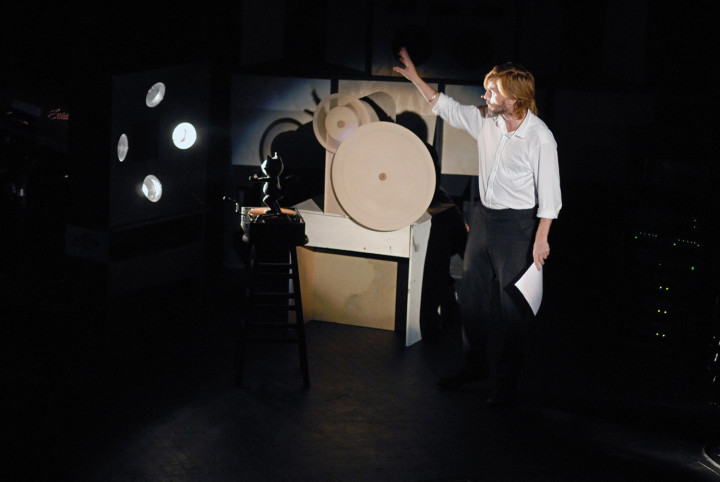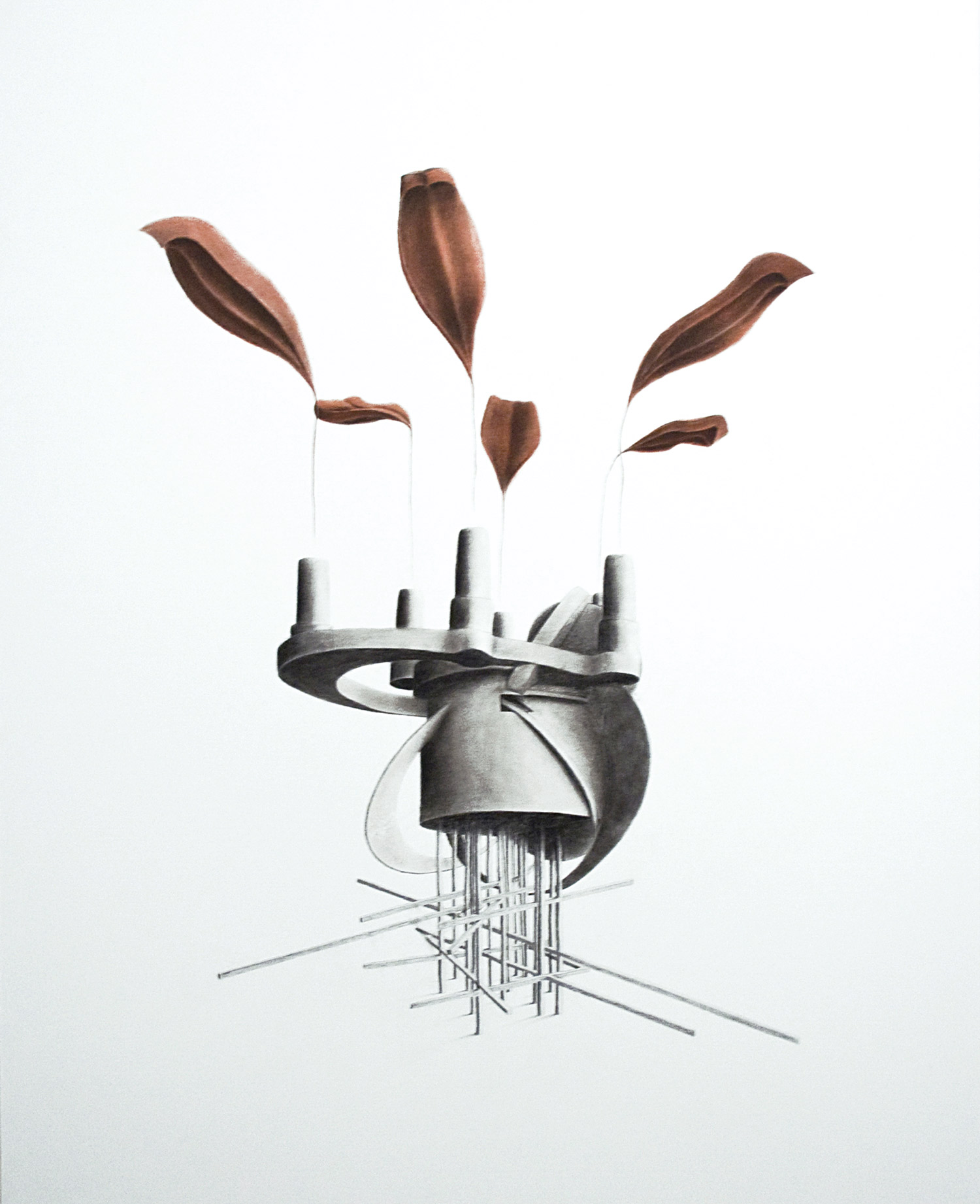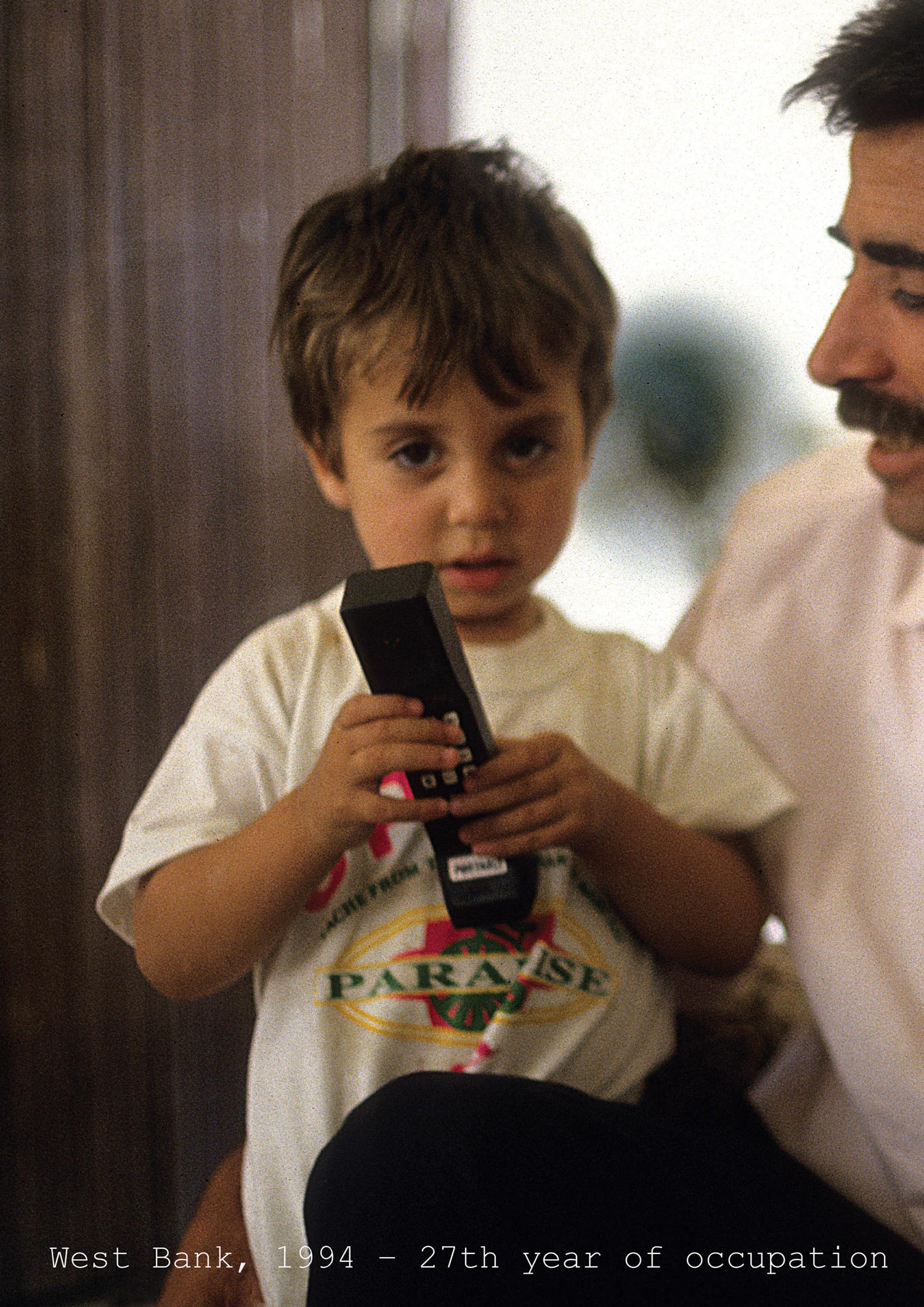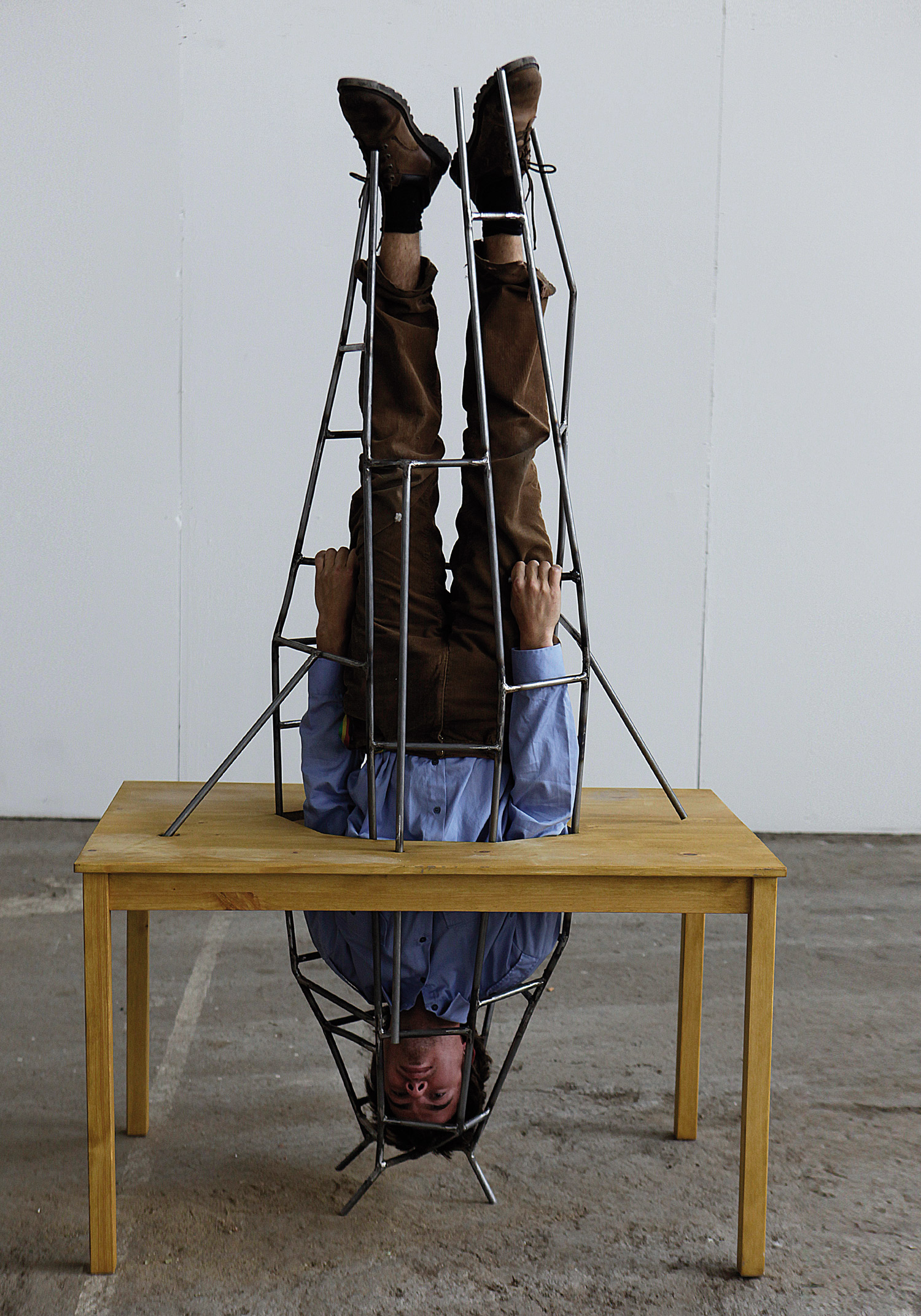
Within the Abrons Art Center classical theater setting, Leckey appeared, light in his step and with a microphone taped to his cheek like an appendage, soon to disappear behind a large computer screen. The artist quietly surfed for a few minutes through images of his apartment and studio in London. This space often appears in his work, such as in Made in Heaven (2004). In this case, the interior came out as jarred sequences, not unlike a computer game, with occasional images of Felix the Cat. Leckey introduced Felix, allegedly the character used for some of the earliest experiments in live broadcasting, as a figurine on a turntable and contained within a large mechanical apparatus. A version of this system had been previously shown at Le Consortium of Dijon for the exhibition “Industrial Light & Magic” (2007), which contributed to Leckey’s nomination for the Turner Prize in 2008. At the Abrons, Leckey-turned-scientist-lecturer-prestidigitator activated the clunky mechanism and, after a few attempts, Felix’s rotating image loomed above the audience.
Leckey then returned to his carefully prepared reading behind the lectern, punctuating it with sips of red wine. His talk defied a chronological development, mentioning that the word broadcast comes from agriculture, as in throwing seeds on the ground, not unlike the structure of his talk. Using a chalkboard as visual support, Leckey also presented the theory of “The Long Tail” by Chris Anderson, editor of Wired, explaining that until recently, 20% of producers monopolized the market and public exposure, and how this has now been reversed with the Internet. In the new order, underground and marginal movements within the 80% have possibilities of survival, proliferation and visibility no longer controlled by an elite. These niche markets were illustrated with a YouTube video of a gluten muck moving with an uncanny life of its own over sound speakers, similar to Derrida’s reference to the chora of primal chaos.
Leckey also made a reference to the fabric of thought and desire, and how currently it was enough to imagine something to have it exist in some sort of virtual form. When he started a constant humming with members from the theater’s pit — slightly hypnotizing the audience — things took a mystical turn.
Leckey’s lecture-like performances are part of a larger trend of lecture-as-medium experimented with by artists such as Tris Vonna-Michell, Trisha Donnelly and Jimmy Raskin, and also present within Beatrice Gross’s series “Edifying” with Pablo Helguera. Recently, for Performa 09, the Bruce High Quality Foundation University’s “Art History with Benefits” lecture dissolved into a rendering of the George Michael song “Father Figure.” The lecture as performance seems to be an instrument of predilection for the presentation of new forms of analysis, of role playing, of deconstructing semblances of authority and academic power; a space enabling artists to take discourse within their own hands.





